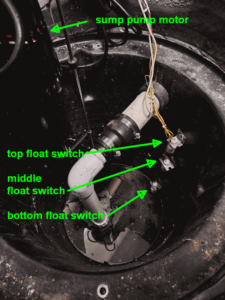
I decided to try to monitor a sump pit. This is how the project stands as of now.

Bluesky: @oppedahl.com
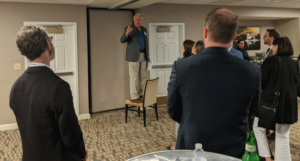
The tenth e-Trademarks listserv reception took place as scheduled on Tuesday, May 3 in Washington, DC. Listserv member Matt Curran has shared a couple of photographs that he took during the reception. Continue reading “A successful tenth e-Trademarks listserv reception!”
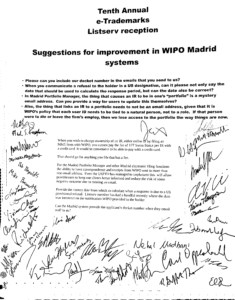
(Updated to report that the nice people at WIPO received the poster. blog article.)
The e-Trademarks listserv reception took place as scheduled on Tuesday, May 3. About seventy people attended. I am delighted to report that two nice people from the Madrid Protocol part of WIPO attended the listserv. We greeted them with an 18 inch by 22 inch (46 cm by 56 cm) poster with a “wish list”. It was signed by about 41 of the listserv members. I will be mailing the poster to our WIPO colleagues. Here are the WIPO people and here is the “wish list”: Continue reading “Nice people from WIPO attended e-Trademarks listserv reception”
 On Tuesday, May 10, 2022, the European Patent Office will present a US-specific webinar on PCT topics. Every US practitioner and paralegal who does PCT work should attend. This webinar is free of charge. Continue reading “EPO webinar on PCT for US paralegals and practitioners”
On Tuesday, May 10, 2022, the European Patent Office will present a US-specific webinar on PCT topics. Every US practitioner and paralegal who does PCT work should attend. This webinar is free of charge. Continue reading “EPO webinar on PCT for US paralegals and practitioners”
This morning an email message came in from a patent firm in a foreign country. The email message was from a patent firm that we have not worked with before. The email message told us that the patent firm has a client that filed a PCT application and is now interested in entering the US national phase. The email message said:
Therefore, we would appreciate if you please provide your fees with a breakdown of firm’s fees and government fees, and any other fee that the client would incur, from the filing to registration as soon as possible.
I will tell you what I wrote back to this patent firm. Continue reading “What I wrote to a potential client just now”
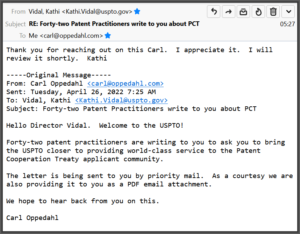
(Update: we now have a phone call scheduled with the acting director of IPLA. Read about it here.)
It was at 7:25 AM today (Eastern Time) that Forty-two Patent Practitioners wrote to Director Vidal, with eight “asks” relating to the Patent Cooperation Treaty, and sent a courtesy PDF copy of the letter by email. Two minutes later, Director Vidal answered the email (see at right). She wrote:
Thank you for reaching out on this … . I appreciate it. I will review it shortly. Kathi.
(Update: we now have a phone call scheduled with the acting director of IPLA. Read about it here.)
(Update: Director Vidal has responded to acknowledge receiving the letter. See blog posting.)
Forty-two Patent Practitioners have written to Director Kathi Vidal in a letter dated April 26, 2022, asking her to help the USPTO get closer to providing world-class service to the PCT applicant community. You can see the signed letter here. Here are the “asks”: Continue reading “Forty-two Patent Practitioners write to Director Vidal about PCT”
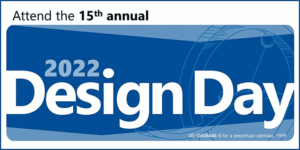
It is now possible to register for USPTO’s Design Day 2022. This is the fifteenth annual Design Day and it will take place on Thursday, April 21, 2022. (You will recall that on February 5, 2022 and again on March 2, 2022, (blog article and blog article) I told you to save the date.) This will be a virtual event, not in-person. This event is free of charge. Continue reading “Register now for USPTO’s Design Day 2022”
(Update: Forty-two Patent Practitioners have written to Director Vidal about this. See blog article.)
There is a recent development that the RO/TR (PCT Receiving Office of the Turkish Patent and Trademark Office) will become a Depositing Office in the WIPO DAS system, with effect from June 1, 2022. Turkey’s decision to be trendy, modern and up-to-date in this regard brings to twenty-four the number of patent offices around the world whose Receiving Offices have become Depositing Offices in the DAS system.
This raises the natural question of what the progress is of the various PCT Receiving Offices in this important area. Which PCT Receiving Offices are trendy, modern and up-to-date? Which PCT Receiving Offices are laggards? It is instructive to rank the Receiving Offices based on how many applications get filed there, and then to check to see which of those ROs have taken the step of becoming a Depositing Office in the DAS system. Here is how things stand as of the present. (Preview: The USPTO fares poorly in this assessment.) Continue reading “Progress of PCT Receiving Offices towards participation in the DAS system”
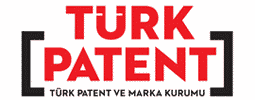 The Turkish Patent and Trademark Office has announced that it will join the WIPO DAS system, with effect from June 1, 2022. Turkey’s participation will be as a Depositing Office, and the participation will be with respect to every possible type of application, as will be discussed. Continue reading “Turkey joins the DAS system”
The Turkish Patent and Trademark Office has announced that it will join the WIPO DAS system, with effect from June 1, 2022. Turkey’s participation will be as a Depositing Office, and the participation will be with respect to every possible type of application, as will be discussed. Continue reading “Turkey joins the DAS system”